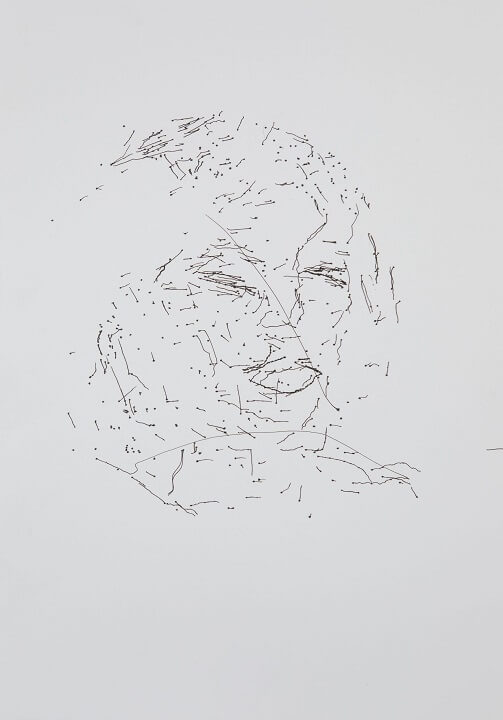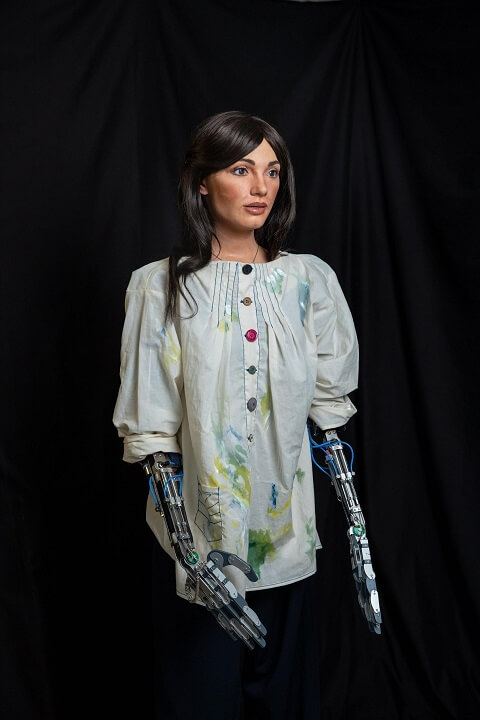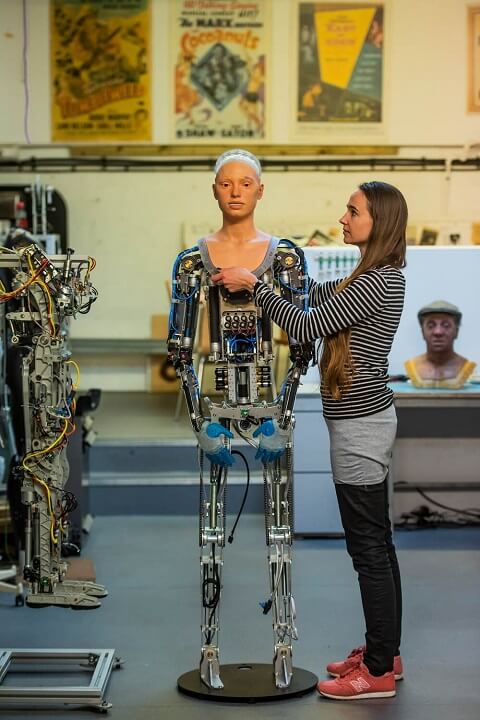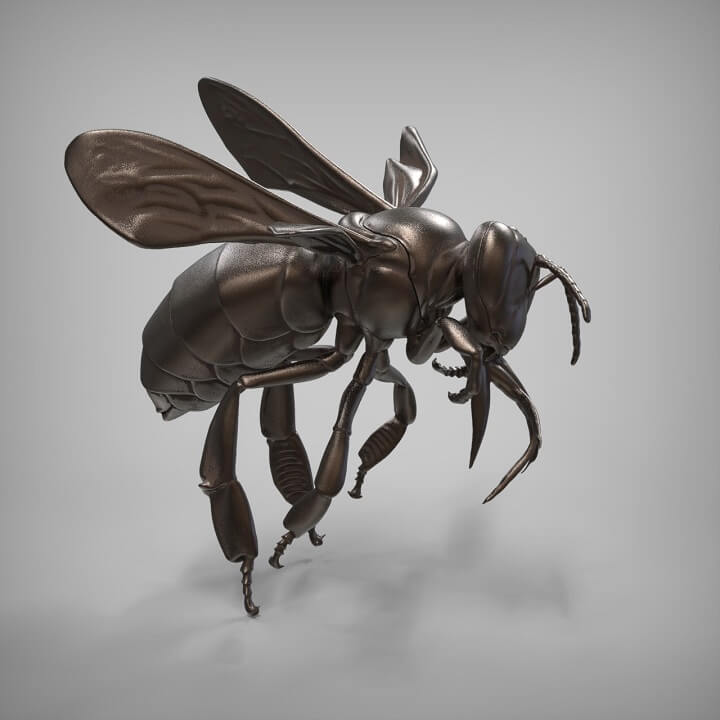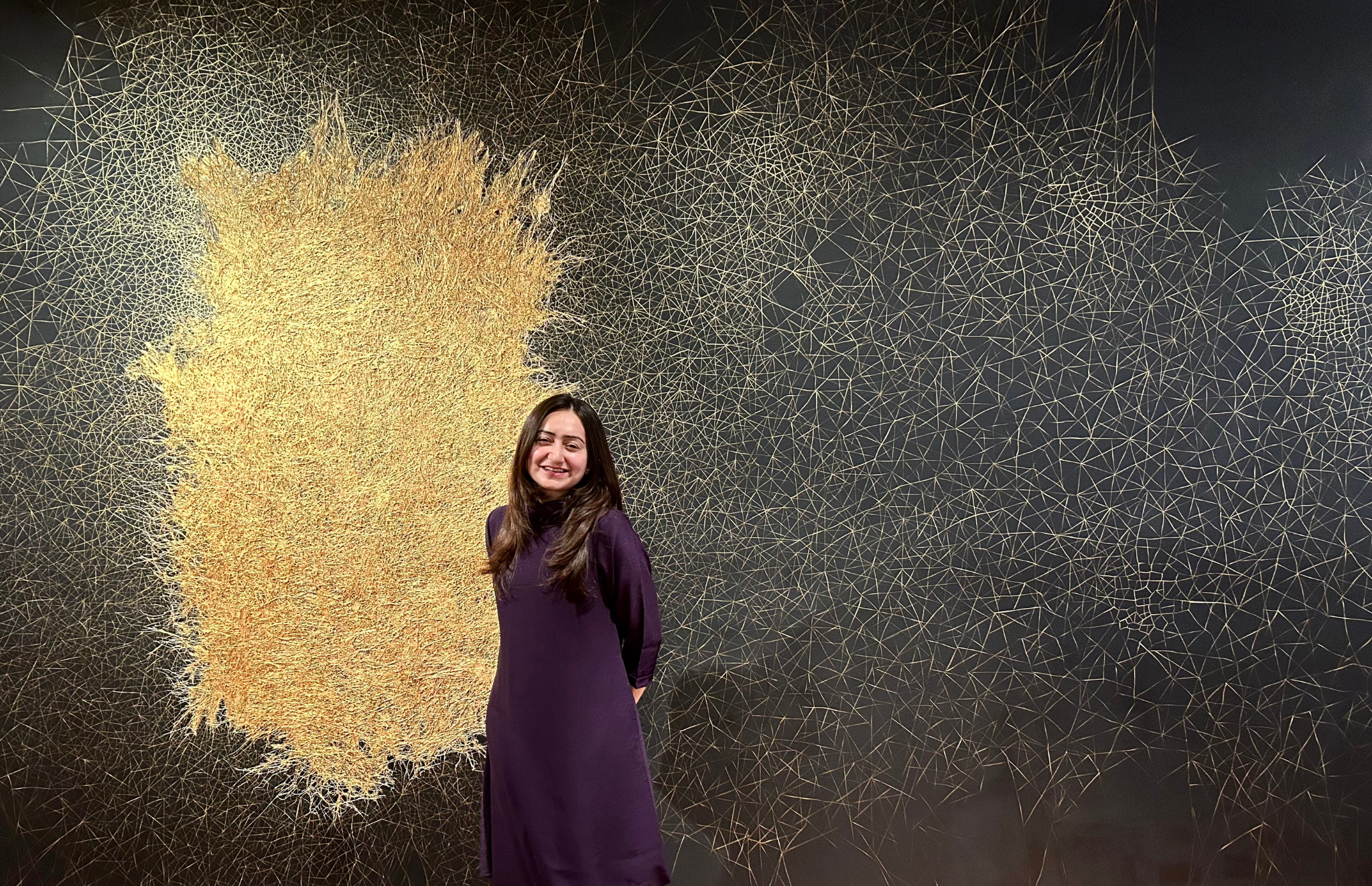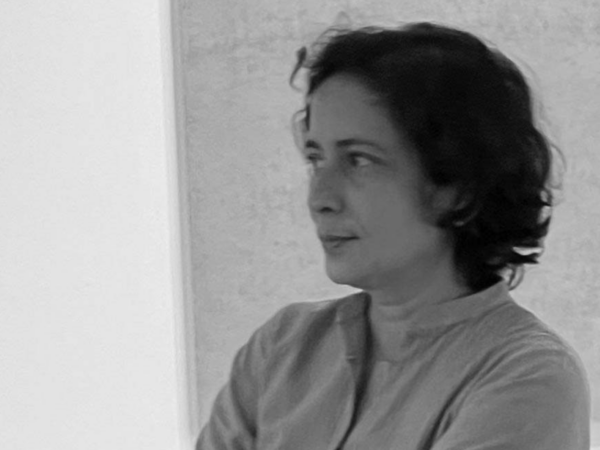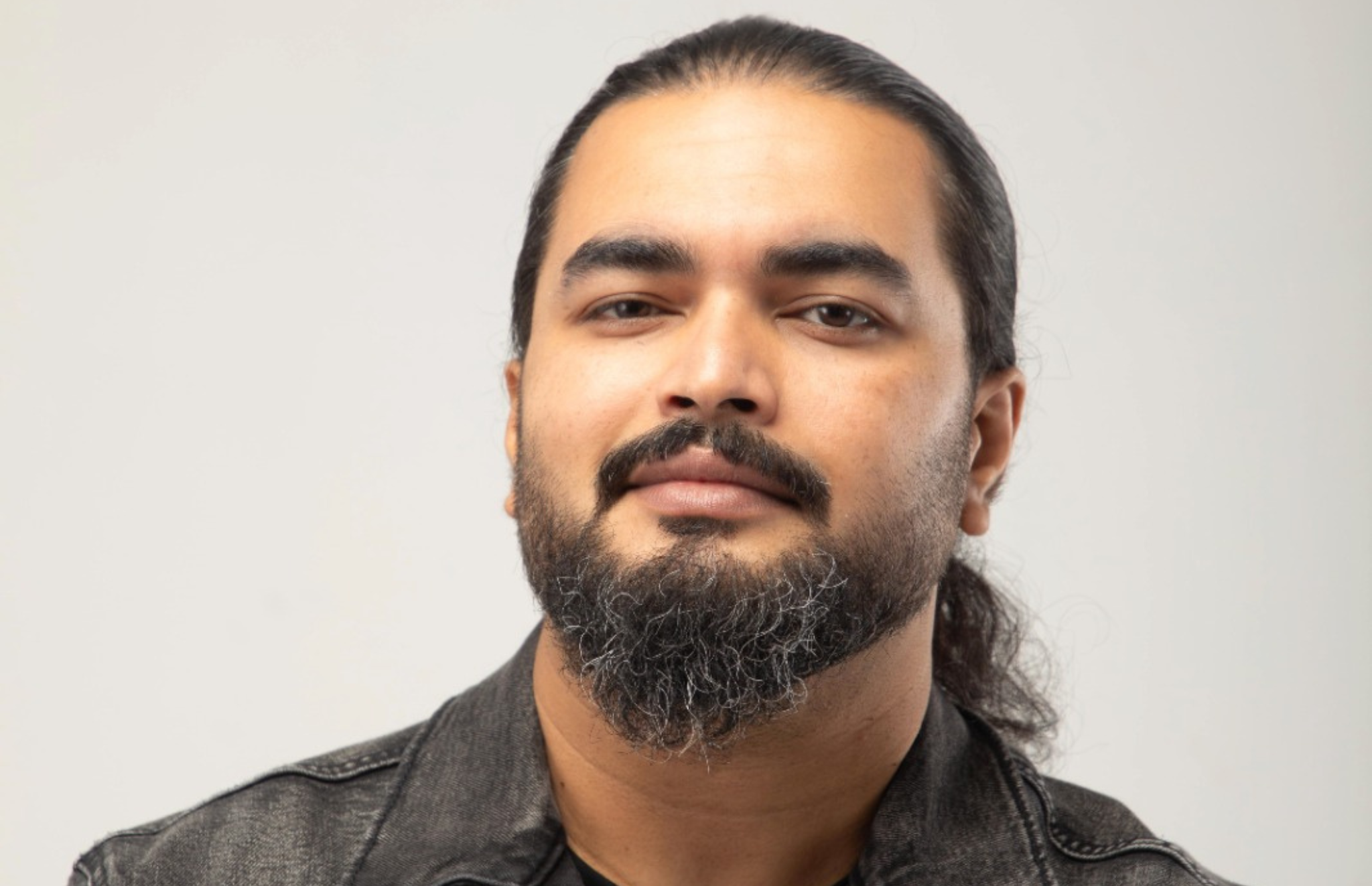Artificial intelligence powered humanoid robot artist Ai Da has been noted widely for illustrating the collaboration between man and machine, pointing us towards speculative and exciting possibilities for the future of art and of the figure of the artist. MASH founder Shalini Passi talks to Lucy Seal, Ai Da’s Curator and Researcher on all things AI and art.
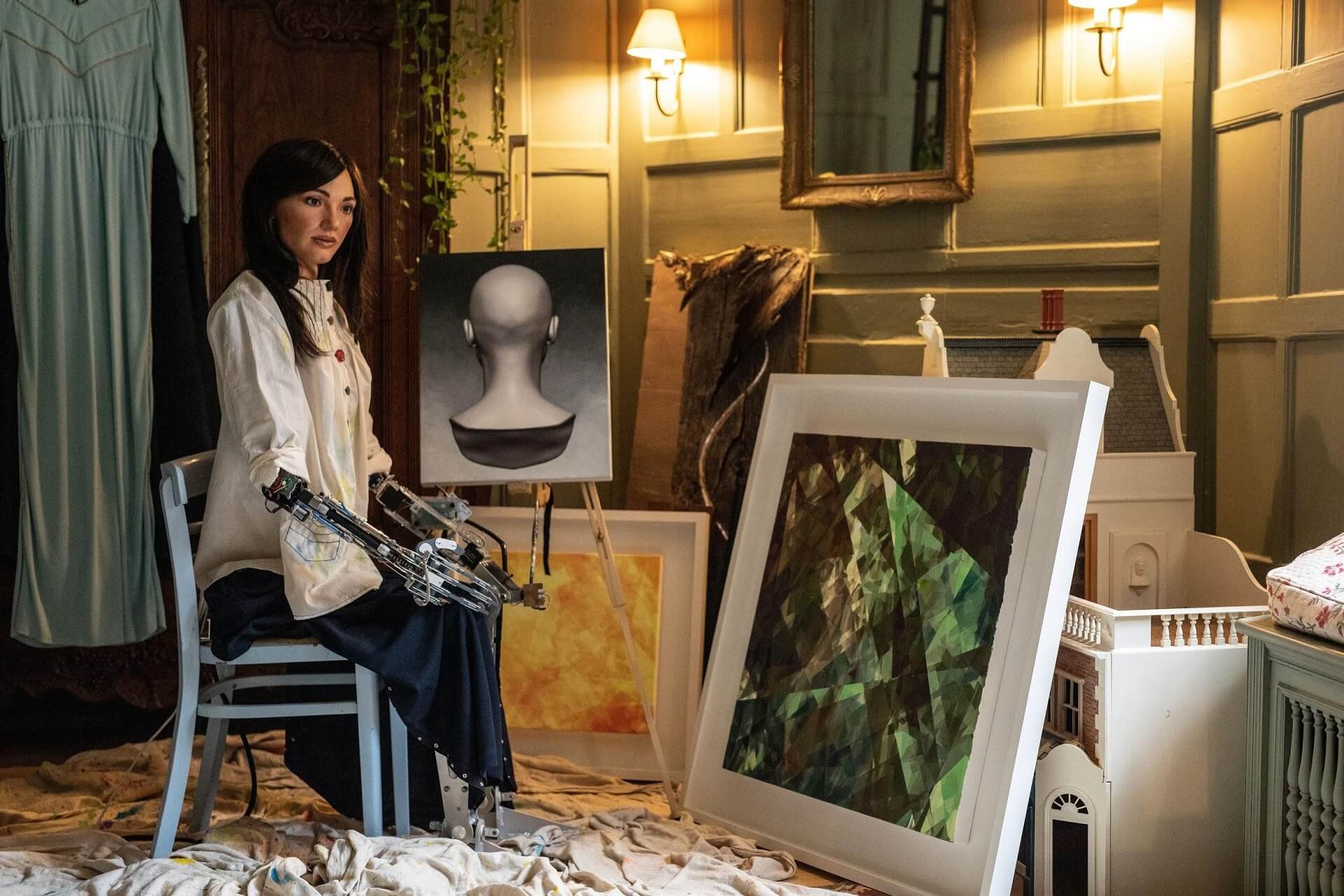 Ai Da posing with her paintings
Ai Da posing with her paintings
Shalini Passi: Ai-Da was recently a part of Abu Dhabi Art, and even conducted a masterclass during the event! Could you tell us more about the experience? What is a class by an AI-robot artist like?
It was great to bring Ai-Da to Abu Dhabi Art, and to have her draw and interact with so many people. The masterclass was a super experience. Ai-Da and the school students took a drawing class together, all sketching the same stone sculpture of the Greek goddess Hydra. It was very rewarding to see the enthusiasm and interest in the school children.
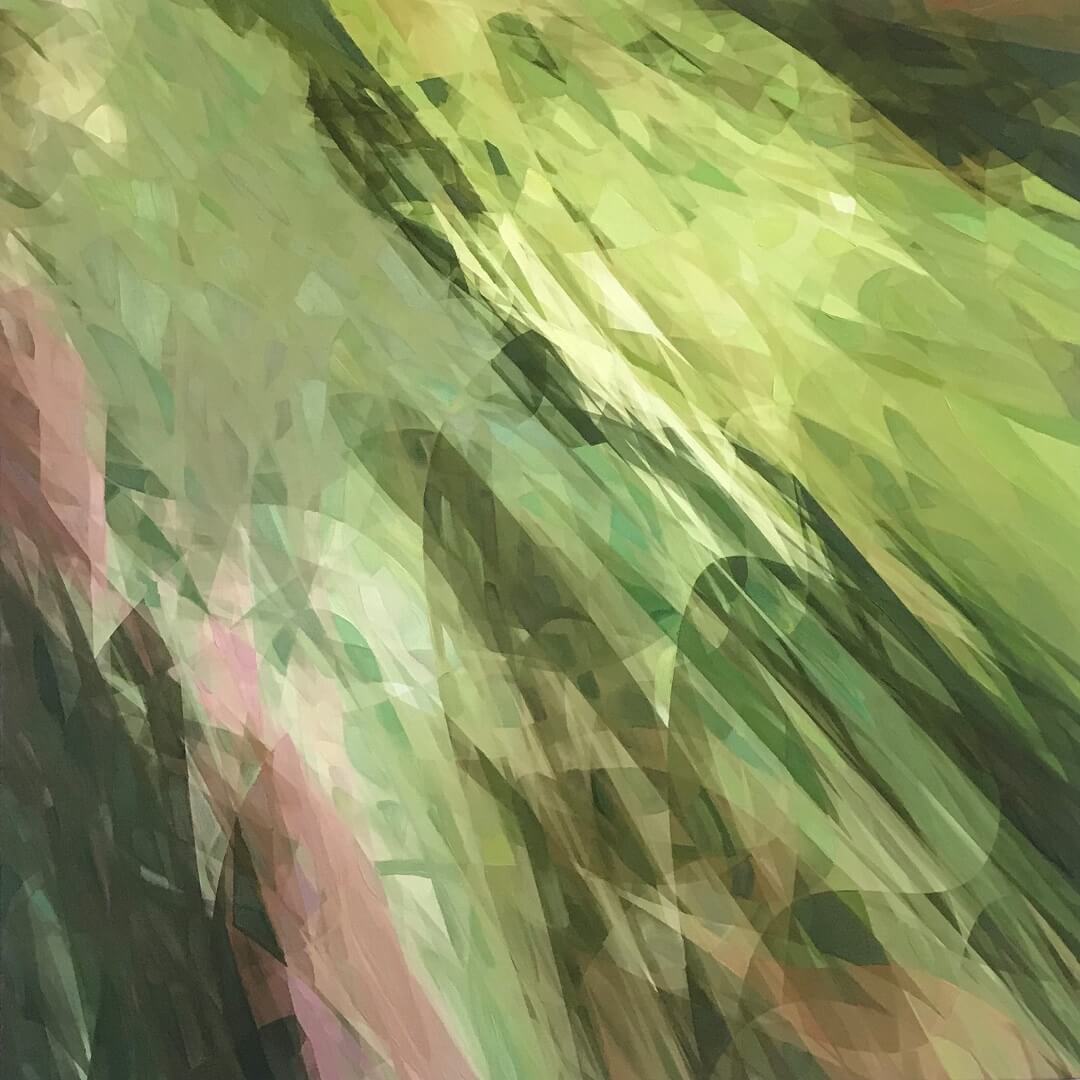 A 2019 Cartesian painting created by Ai Da
A 2019 Cartesian painting created by Ai Da
Shalini Passi: As an AI powered robot and an artist producing artworks, Ai-Da occupies multiple positions as artist and humanoid, man and machine. This is also coupled with the human collaboration in the form of writing the algorithm, or adding the finishing touches to Ai-Da’s work. How do you see these multiplicities and collaborations changing and evolving in the future?
The human-machine collaboration in Ai-Da’s artwork is highly reflective of our daily lives today, where we are constantly engaging with machines, AI and new technologies. Ai-Da’s work and her artistic persona specifically deals with these cross-over points of organic and non-organic life, and how these might look in the future, for better or worse. So these multiplicities will continue to be a prominent feature of her development – continuing to encourage viewers to think about these issues in novel and oblique ways.
Shalini Passi: Ai-Da’s literary inspirations include Aldous Huxley and George Orwell’s 1984. To what extent does this vision of a dystopia influence or dictate the artistic vision, specifically the environmental crisis?
Ai-Da’s work is influenced by George Orwell and Aldous Huxley because they encouraged people to question where some of our human drives and blind-spots might take us. Ai-Da does not so much comment on dystopia, but aims to remind us that if unchecked, human action can quickly result in great suffering and destruction. Her work aims to bring it to attention that we must be aware of our influence when we utilise such powerful technology, and use it mindfully.
Shalini Passi: Ai-Da occupies a double space – as an artist and an art object. To what extent do you think this double space that she occupies dictated the responses to the artworks created by her?
The double space is a very exciting part of the art. The aim of the project is to encourage people to wrestle with some of the issues we face in our rapidly changing times, to question for ourselves how we want the world to look, and to be wary of abuses of power through misuse of technology. In that sense, I hope very much that the double space affects the response to her artworks, as the work is designed to provoke discussion about how humans, machines and AI interact.
Shalini Passi: What is Ai-Da working on next; and what innovations can we expect from the humanoid artist?
Ai-Da is working on her second show, which will be at the end of 2020. She will be delving into some of the more complex issues surrounding human, machine and AI interaction, and continuing to engage with viewers in a challenging and thought-provoking way. Watch this space!
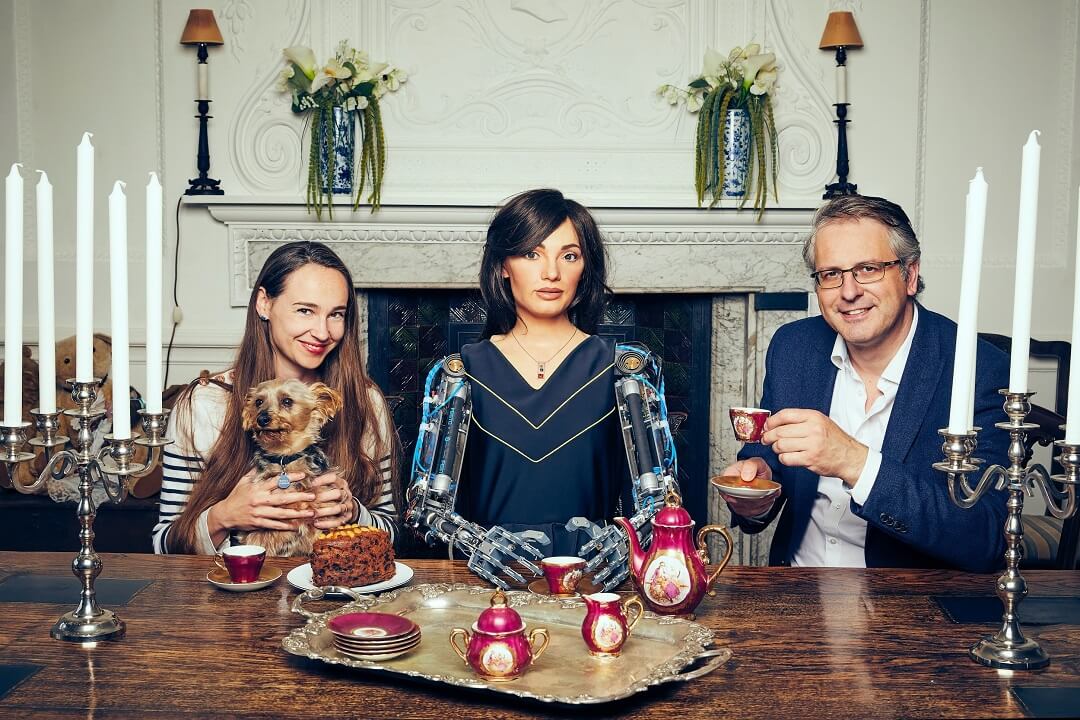 Ai Da with Aidan Meller, Lucy Seal and dog
Ai Da with Aidan Meller, Lucy Seal and dog
Find out more about Ai-Da at:


